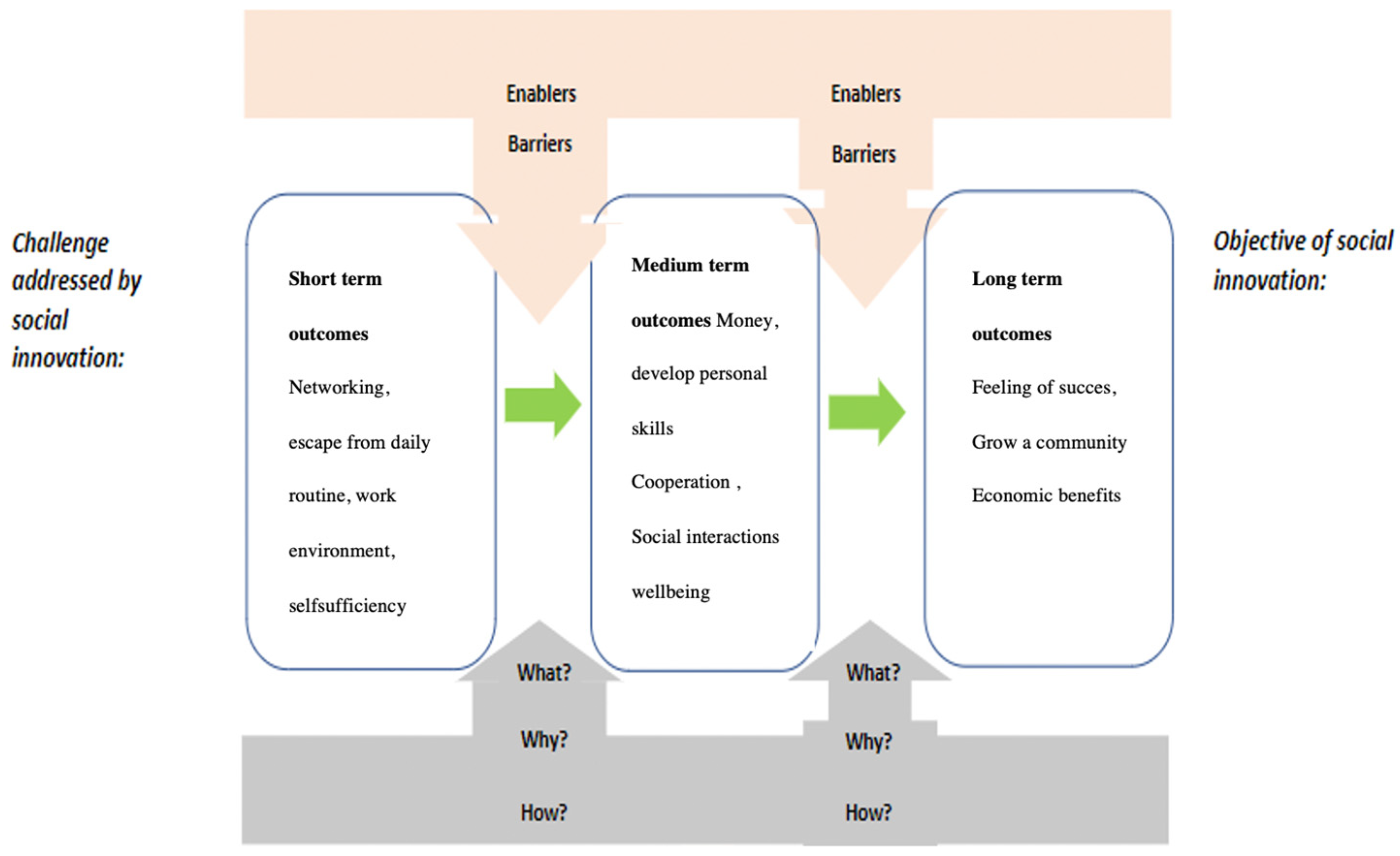Social Innovation and Women’s Agricultural Cooperatives: Applying Social Change Theory †
Abstract
1. Introduction
2. Materials and Methods
3. Results
4. Discussion
5. Conclusions
Author Contributions
Funding
Institutional Review Board Statement
Informed Consent Statement
Data Availability Statement
Conflicts of Interest
References
- Vairami, Β.Ν. Social Enterprises in Greece: Strategic Direction and Performance. Doctoral Dissertation, Aristotle University of Thessaloniki, Thessaloniki, Greece, 2015. [Google Scholar]
- Baker, C.; Courtney, P. Conceptualizing the wider societal outcomes of a community health programme and developing indicators for their measurement. Res. All 2018, 2, 93–105. [Google Scholar] [CrossRef]

Disclaimer/Publisher’s Note: The statements, opinions and data contained in all publications are solely those of the individual author(s) and contributor(s) and not of MDPI and/or the editor(s). MDPI and/or the editor(s) disclaim responsibility for any injury to people or property resulting from any ideas, methods, instructions or products referred to in the content. |
© 2024 by the authors. Licensee MDPI, Basel, Switzerland. This article is an open access article distributed under the terms and conditions of the Creative Commons Attribution (CC BY) license (https://creativecommons.org/licenses/by/4.0/).
Share and Cite
Sotiriadis, I.; Sidiropoulos, G.; Partalidou, M. Social Innovation and Women’s Agricultural Cooperatives: Applying Social Change Theory. Proceedings 2024, 94, 54. https://doi.org/10.3390/proceedings2024094054
Sotiriadis I, Sidiropoulos G, Partalidou M. Social Innovation and Women’s Agricultural Cooperatives: Applying Social Change Theory. Proceedings. 2024; 94(1):54. https://doi.org/10.3390/proceedings2024094054
Chicago/Turabian StyleSotiriadis, Ioannis, George Sidiropoulos, and Maria Partalidou. 2024. "Social Innovation and Women’s Agricultural Cooperatives: Applying Social Change Theory" Proceedings 94, no. 1: 54. https://doi.org/10.3390/proceedings2024094054
APA StyleSotiriadis, I., Sidiropoulos, G., & Partalidou, M. (2024). Social Innovation and Women’s Agricultural Cooperatives: Applying Social Change Theory. Proceedings, 94(1), 54. https://doi.org/10.3390/proceedings2024094054





